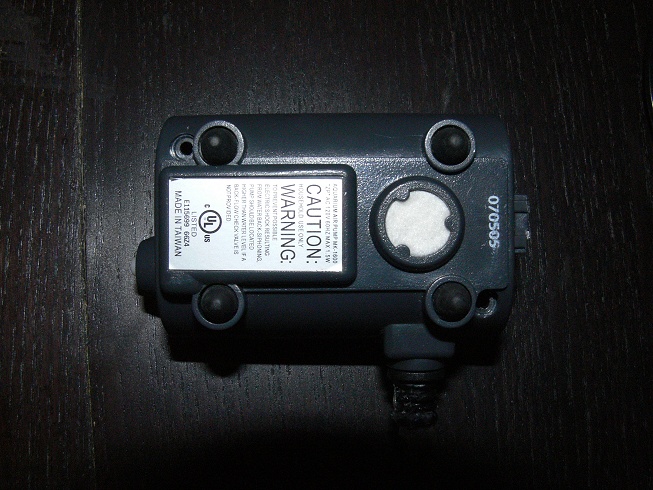An aquarium air pump can be used as an inexpensive source of low vacuum with a small amount of tweaking. Supplies needed are:
The air pump
Screwdriver (usually) to open the air pump
Hose barb (your favorite size) for vacuum inlet
Drill
Glue (e.g. RTV/caulk, epoxy, etc.)
Of course, you could convert one by sealing up the whole thing in a big Tupperware container and punching a port through, but this method is more robust and compact.
Have a gander at the pictures below. The internals shown are pretty typical, and diabolically simple: AC wall power flows through a U-shaped electromagnet, which wiggles a small permanent magnet between the poles rapidly back and forth to pump a rubber bellows. The bellows draws air directly from the inside of the case and forces it through the output port, drawing new air into the case through some small holes or dust filter on the case somewhere. Thus, “reversing” the pump requires simply drilling your own hose barb into the case and sealing up the original vent (plus any other air leakage paths). The converted pump can be used as a vacuum pump by plugging the new port into your vacuum-needing device and letting the original port vent to atmosphere, and can still function normally as a positive-pressure pump as needed.


Common air leakage paths are around the AC cord entry, around the output port and where the screws / rubber feet go (the screws may be hiding under the rubber feet anyway). Probably the easiest thing to do is just run a nice fat bead of RTV around the entire seam between the halves of the case before putting it back together.
The pump shown pulls about 5 inches mercury (~127mmHg); most are probably in that ballpark. If your needs fall somewhere above this but well below a “real” vacuum pump (or even a disembodied fridge compressor), it might be possible to beef up the vacuum or flowrate a bit by putting 2 in series or parallel.
Some “standards”:
In the US at least (don’t know about elsewhere), the common size pumps (for 10 ~ other double digits gallon fish tanks) generally take 3/16″ flex tubing, and unmarked tubing in the fish supplies section of your local pet store is probably this size. Larger pumps with e.g. 1/4″ ports are available for large tanks, but if it doesn’t say what size tubing to use, you can probably assume 3/16. This refers to the tubing inner diameter (or the pump port’s outer diameter); the tubing outer diameter can vary significantly and is often not specced. Since you will be adding your own port, you can really make it any size you want, but sticking with 3/16 means you will have plentiful local sources of matching hose barbs, tee fittings and other parts at most any pet store.
Leave a Reply